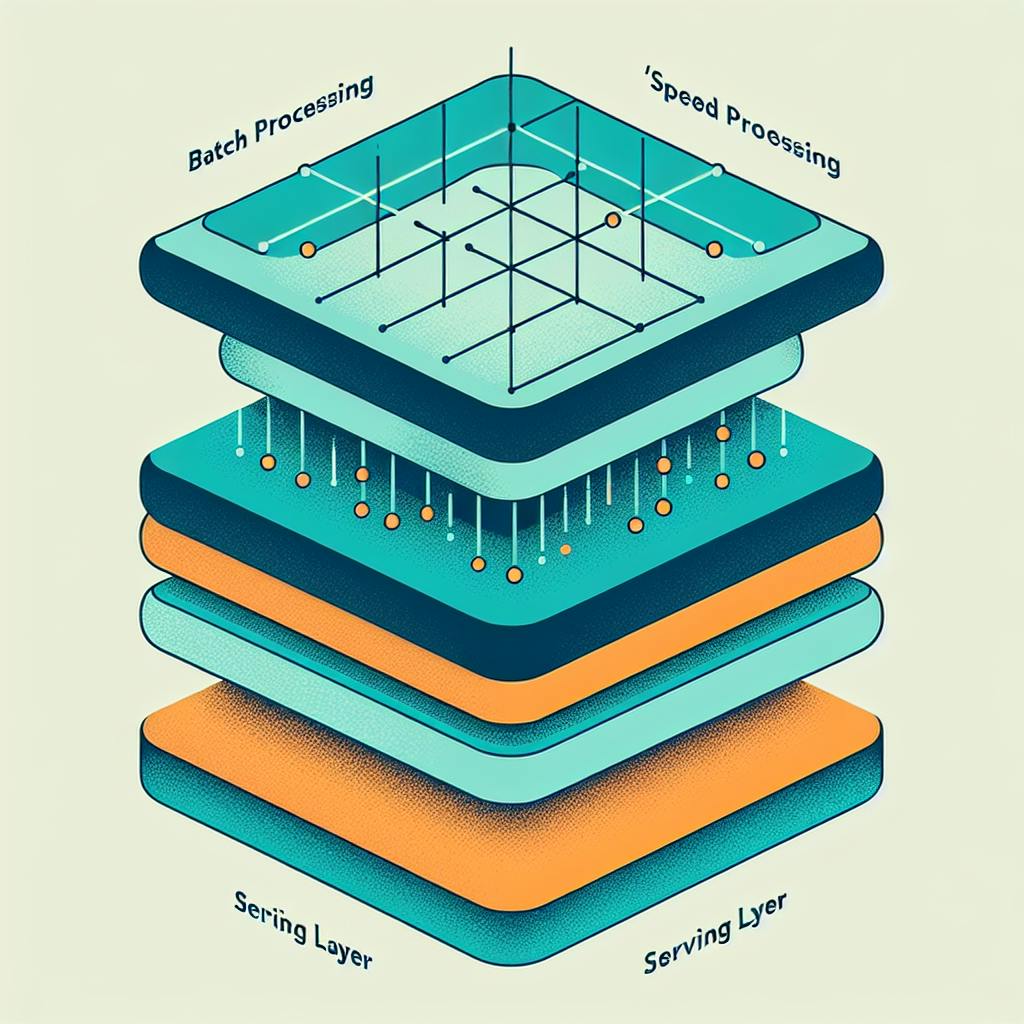Automated anomaly detection in IT operations is a critical technology that helps monitor, identify, and address unusual activities or patterns in IT systems and applications. By using advanced techniques like machine learning, deep learning, and statistical methods, these systems ensure that IT operations run smoothly and securely. Here's a quick overview:
- Understanding Anomalies: Identifies unusual activities that deviate from the norm, which could indicate potential issues.
- Techniques Used: Utilizes machine learning, deep learning, neural networks, and statistical approaches to detect anomalies.
- Real-World Applications: Essential for cybersecurity, infrastructure monitoring, and application stability.
- Challenges and Solutions: Addresses common problems such as noisy data, concept drift, and the complexity of analyzing relationships.
- The Future: Explores advancements like adaptive model training and embedding anomaly detection directly into apps.
This approach aims to catch problems early, ensuring IT systems are secure, efficient, and reliable, which is increasingly important as technology becomes more complex and integral to business operations.
Understanding Anomalies
Anomalies in IT can show up in different ways, like apps taking too long to respond or logs showing unusual activities. If these things aren't caught early, they could lead to bigger troubles, such as systems going down, data getting stolen, or breaking rules, which hurts customer trust and business.
Evolving Beyond Threshold-based Monitoring
Many companies use a simple method where they set fixed limits. If anything goes above or below these limits, it triggers an alert. But this method isn't great for today's complex systems where performance can change a lot. It often results in too many false alarms or misses real problems because it can't adapt to new patterns.
Modern tools use AI to better understand what 'normal' looks like, even as it changes. They look at a bunch of factors, like time and location, to spot oddities more accurately. This means fewer false alarms and quicker detection of real issues, helping to keep IT operations, system integrity, and information security in check.
Automated Anomaly Detection Techniques
Automated anomaly detection uses different methods to figure out what's normal in IT systems and spot anything unusual. Here's how it works:
Machine Learning Models
Machine learning is like teaching a computer to recognize patterns by itself. It uses past data to learn what's normal and what's not.
Supervised learning works by showing the computer examples of both normal and unusual patterns. The tricky part is you need lots of examples, especially of the unusual stuff.
Semi-supervised learning mixes a few examples with lots of regular data. This way, the computer still learns about the unusual stuff but with less effort.
Unsupervised learning only uses normal data. The computer learns what's normal and then spots anything that doesn't fit as unusual. No need for examples of the unusual.
Deep Learning and Neural Networks
Deep learning uses layers of calculations to understand complex data, like when things happen in a sequence.
Recurrent neural networks (RNNs) are smart because they remember previous information, helping to notice when something doesn't follow the usual pattern. But, they need a lot of computer power to learn.
Simple deep neural networks are easier to use but might not catch all the patterns over time.
Statistical Techniques
These methods use math to figure out what's normal and then look for data that doesn't fit.
Autoregressive models like ARIMA watch for normal ups and downs and seasonal changes. If data is way off from what's expected, it's flagged as unusual.
Control charts keep an eye on how things change over time. If something goes way out of the normal range, it's a sign something's up. These charts need to be updated to stay accurate.
Rules-Based Systems
These systems use set rules to decide what's normal and what's not.
Thresholding sets specific limits. If something goes beyond these limits, it alerts us. But, with complex IT operations, it's hard to stick to fixed limits.
State machine rules outline what should happen in a system. If something happens that shouldn't, it's a sign of trouble. However, it can be hard to keep track of everything in complex systems.
Rules-based methods are straightforward but might not catch everything in changing environments.
Implementing Automated Anomaly Detection
Setting up automated detection of unusual activity in IT systems needs a good plan and the right steps, especially when it comes to handling data, building models, and keeping everything running smoothly.
Data Collection and Processing
To spot anything odd, you need good data. Here’s what to do:
- Gather data from systems and tools to track how they’re doing, like speed, errors, and more. Try to cover as much as you can.
- Make data work together by adjusting it so everything can be compared. Fill in any missing pieces.
- Keep data safe by making sure only the right people can see it and protecting it when it's moving or stored.
- Remove unnecessary info that might confuse the models. Focus on what really matters for keeping systems safe and running well.
Model Development and Validation
With clean data, you can teach models to tell the difference between normal and not-normal:
- Teach models with old data, showing them what’s normal. If you’re using a method that needs examples of problems, make sure to include those.
- Check models with new data to make sure they’re catching problems without bothering you with too many false alarms.
- Adjust sensitivity to find a good balance between catching real issues and not overreacting.
- Update models so they can handle changes in how things work over time.
Operationalization and Maintenance
To keep models helpful and accurate, do the following:
- Watch how models are doing, using metrics to make sure they’re still on track.
- Look out for changes in your IT environment that might mean models need a tune-up.
- Update models with new data regularly to keep up with changes in IT operations.
- Tweak sensitivity as you learn more about what kinds of alerts are helpful.
By taking these steps, you can help make sure your IT systems stay safe, fast, and reliable.
Real-World Applications
Automated anomaly detection is super useful for keeping an eye on IT systems and making sure everything works as it should. Let's look at some ways people use this technology in real life.
Cybersecurity and Intrusion Detection
In the world of keeping data safe, anomaly detection helps spot when something fishy is happening by looking at how users act and what's going on in the network.
- User behavior analysis - This method learns what's normal for each user, like when and how they log in. If something odd happens, it could mean someone's account is in danger.
- Network traffic analysis - Keeping track of how much data is moving around and what it looks like can catch hackers in action, from trying to overload the system to sneaking in malware.
This way, any weird activity gets noticed early, helping to stop hackers.
Infrastructure Performance Monitoring
To avoid system crashes, it's crucial to watch for signs of trouble in the hardware and software that keep things running.
- Resource utilization - Checking on how much computer power and storage is being used can show if the system might run out of space or slow down soon.
- Service performance - Looking at how fast services respond and if there are any errors can tell if something's not working right.
- Log analysis - Going through system logs can reveal issues, like parts of the system getting too stressed.
Catching these issues early means they can be fixed before causing bigger problems.
Application Stability Monitoring
Making sure apps work well and don't crash is important for keeping users happy.
- Synthetic monitoring - Testing apps by mimicking what users do can find problems affecting how the app works.
- APM data - Analyzing technical details like how long the app takes to respond helps spot potential issues.
- Feature usage - Watching how people use different parts of the app can show which features might need improvement.
Finding and fixing these issues quickly helps keep apps running smoothly.
With everything getting more complicated, being able to automatically spot and deal with oddities is crucial for keeping IT systems in good shape. This tech helps manage lots of data and keeps things working well, which is super important for businesses.
sbb-itb-9890dba
Challenges and Solutions
Setting up automated anomaly detection can hit a few bumps. Here's a look at common problems and how to fix them.
Noisy and Irregular Data
Data from IT systems can be all over the place, with sudden jumps and drops. This mess can make it hard for the detection systems to work right, either by making too many false alarms or missing real issues.
Solutions:
- Clean up the data by getting rid of short-term jumps and drops
- Train models to look at the big picture instead of small changes
- Make models less sensitive so they don't jump at every little thing
Concept Drift
What's considered "normal" for IT systems can change over time. If the detection models don't keep up, they might start making mistakes.
Solutions:
- Keep an eye on how well the models are doing
- Update models with new data often
- Set up systems that automatically update the models
Analyzing Complex Relationships
Sometimes, odd patterns only show up when you look at how different parts of the system work together. This needs more advanced analysis.
Solutions:
- Use smarter methods like neural networks that can understand how different parts of the system affect each other
- Group related data together to make it easier to spot patterns
- Use visuals to help see how different parts of the data relate
Limited Training Data
It can be tough to find enough examples of problems to teach the models what to look for.
Solutions:
- Create fake data to mimic problems
- Use learning methods that don't need as many examples
- Start with learning methods that figure things out on their own, then use more specific examples over time
Achieving Quick Time-to-Value
It might take a while before automated anomaly detection starts to pay off because of the time needed to analyze data and set up models.
Solutions:
- Focus on the most important systems first
- Start with simpler models and add more complex ones later
- Work with experts to speed up the setup
By knowing these problems and how to solve them, we can make automated anomaly detection work better for IT operations management, ensuring system integrity and performance monitoring.
The Future of Automated Anomaly Detection
Automated anomaly detection is getting better all the time, making it easier to keep IT systems safe and running smoothly. Let's look at what's coming up that could make it even more helpful.
Deep Learning for Multivariate Anomaly Detection
Deep learning, a type of smart computer learning, could help us see problems by looking at lots of different things at once. But, it needs a lot of examples to learn from and can take up a lot of computer power. Researchers are working on ways to make this learning quicker and easier.
Automated and Adaptive Model Training
Keeping the system that spots problems up to date can be a lot of work. New tools are being made that can update themselves by learning from new information as it comes. This means they can stay accurate without needing someone to always check on them.
Embedding Anomaly Detection into Apps
Instead of keeping the problem-spotting system separate, there's a move to put it right into the apps themselves. This could make it faster at finding issues but might also make the apps more complicated. Finding the right balance is something people are working on.
Enhanced Anomaly Interpretation
When something unusual is found, figuring out what's wrong quickly is important. New methods are being developed to make it clearer why something was flagged as unusual, helping IT teams fix issues faster.
Conclusion
Automated anomaly detection is already doing a lot for IT operations, but there's still room for growth. With new developments in how it learns, updates itself, and even how it's built into apps, it's going to become an even bigger part of keeping IT systems working well. Keeping up with these changes will be key for anyone involved in IT operations management, system integrity, and performance monitoring.
Conclusion
Automated anomaly detection is super important for keeping IT systems running smoothly. It helps IT teams catch problems early, so they don't turn into big headaches. As our tech gets more complicated, manually checking everything just doesn't cut it anymore. Automated methods are key.
Here are some main points to remember when setting up automated anomaly detection:
Instrumentation is Critical
To spot issues accurately, it's crucial to have detailed monitoring across your systems and apps. This means keeping an eye on:
- How much CPU, memory, disk, and network resources are being used
- How quickly services respond and if there are errors
- How people are using the app and what parts they interact with
- Important business numbers like sales, sign-ups, and customer stays
If you don't watch these things closely, your models might miss problems.
Clean, Normalized Data is Vital
Before using data in models, make sure to:
- Fill in any missing bits
- Smooth out any weird spikes or drops
- Make sure data from different places matches up
- Line up all the times correctly
- Keep up with any big changes in what 'normal' looks like
Cleaning your data helps make sure your models are making the right calls.
Balance Model Complexity
Simple models are easier to understand and keep up with, but more complex models can spot harder-to-see patterns. Decide what works best for you based on how tricky your needs are and what skills your team has.
No matter what, you need to keep checking on your models to make sure they're still doing a good job.
Operationalize Carefully
To really get the benefits, you need to make sure anomaly detection is woven into how you handle alerts, fix problems, and work together. This means:
- Figuring out which alerts are most important
- Giving clear info on what's going wrong
- Making it easy for teams to work together to dig deeper
- Keeping track of how fixes are going
With the right setup for monitoring, clean data, and models, plus making sure it all works well from start to finish, automated anomaly detection can really help keep your IT services and systems in top shape.
Related Questions
What is automated anomaly detection?
Automated anomaly detection is when computers use special tools to spot things that don't look right in the data they're checking. This can help catch problems early. For example, in a bank, it might find weird patterns in transactions that could mean fraud. Or in a factory, it could notice strange noises in machines that might mean they're about to break down. This way, people can fix things before they get worse.
What is anomaly detection in information systems?
In information systems, anomaly detection keeps an eye on computer systems and networks to find anything odd that might mean there's a cybersecurity issue. This could be anything from a sudden increase in internet traffic that might mean a cyberattack, to someone logging in from a new place, which could mean a stolen password. Spotting these things early helps keep data safe.
What are the three 3 basic approaches to anomaly detection?
The three main ways to spot anomalies are:
- Unsupervised learning: This method teaches the computer what normal data looks like. Then, if anything doesn't match up, it's flagged as possibly strange. You don't need examples of bad stuff for this.
- Supervised classification: Here, the computer learns from examples of both normal and strange data. It uses this to tell if new data is okay or not.
- Semi-supervised detection: This mixes a little bit of strange data with lots of normal data to teach the computer. It's a middle ground that needs fewer examples of the strange stuff.
What is an example of anomaly detection in cyber security?
A good example in cybersecurity is watching for sudden big changes in data leaving the network. Normally, the amount of data sent out is pretty consistent. If there's a big jump, it might mean someone is stealing data. The system learns what's normal and then alerts if something's off, helping security teams stop data theft.



